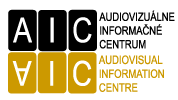CANNES INTERNATIONAL FILM FESTIVAL
(76th edition, May 16 – 27, 2023, France)
|
|
Interview with Marek Jasaň
 Marek Jasaň graduated in animation from the Film and Television Faculty of the Academy of Performing Arts in Bratislava in 2017. He collaborated on various animated advertisements, festival spots, games, and short films.
Marek Jasaň graduated in animation from the Film and Television Faculty of the Academy of Performing Arts in Bratislava in 2017. He collaborated on various animated advertisements, festival spots, games, and short films.
How did this collaboration on Electra come about and what preceded it?
I think the biggest contributing factor to my collaborations of the last few years (including Electra) was the fact that I was invited to join the team making Filip Pošivač’s stop-motion feature film Tony, Shelly and the Magic Light. Frankly, it came as a surprise to me, since I had little experience with puppet animation at that time (just one school assignment). I thought of it as a challenge, though, as well as an opportunity to expand my skill set, so I accepted the offer and moved to Prague where the film was being made. I met many professionals from the field there, including Daria Kashcheeva. Our first meeting was very ordinary. Only later did Filip tell me that she was already searching for animators for her project Electra, and Filip recommended me.
Could you tell us what does the job of a lead animator encompass?
Personally, I see it as the role of an advisor and a connecting element between the director and animators. It’s the person you go to when you need to clear up some doubts about what happens onscreen, or when you’re not sure how to comply with the director’s wishes from a technical or animation-related point of view. In our smaller teams, however, that was never really needed, as we always discussed any problems either with the directors themselves, their assistants, or other colleagues. Each of us has their strengths and weaknesses. Together, we helped one another, commented on each other’s shots, and exchanged experiences. And in my eyes, making Electra was the same way, even if there were only two animators. We were equal partners learning from one another and with time, we became better at different types of shots. Vojto Kiss worked mostly with life-sized puppets and I preferred real actors. I only learnt that they labelled me as the lead animator after the film had been shot already, but even if I knew about it sooner, it wouldn’t change a thing in our collaboration.
Could you describe the film’s animation technique in more detail? In what way was it specific, or new to you?
The film combines pixilation, puppet animation, and slow-motion shots. I’ve never done any of it at such great length. The work with actors was especially challenging, since many principles an animator is used to do not apply to pixilation of real people. You have to account for the fact that people have a limited supply of energy. Every shot with an actor was designed to be filmable within three hours, and even that was sometimes borderline doable. If you fixate a puppet properly, you can have your lunch break or even let it sit overnight, so you could be filming a shot over several days. With an actor, I had to make the shot without any breaks. I think this was quite strenuous for both sides at first. It took the actors a while to get accustomed to the animator determining their movement paths instead of themselves. We also used puppet stop-motion animation which, with most of the objects used, meant also working with the fabric material, the actors’ make-up, and custom-made life-sized posable mannequins. And the third technique we made use of was a slow-motion variation of classic filmed shots. The actors had to play out all actions about five times slower while they were being filmed by a camera with a higher frequency. Then, the shot was sped up in post-production and a few frames were cut out so that it resembled pixilation. We only resorted to it for a few shots which would be very difficult to make with the previous two techniques.
The film Electra is going to the cinemas already, but I assume you’re also working on other projects right now. Could you tell us a bit more, maybe even introduce them?
Speaking of bigger projects, I’ll mention the animated feature project Of Unwanted Things and People. Once again, I occupy the role of an animator. It’s a co-production of four countries (France, Czech Republic, Slovakia, and Slovenia). The Slovak part is produced by Artichoke and directed by Patrik Pašš Jr. Again, it’s a puppet project that has to overcome new technical challenges and will offer new combinations of animation techniques which the viewers might find interesting. In the film, family members tell stories relating to the theme of uselessness. Each mini-story is made in a different country and the Slovak one revolves around two boys that discover the secret of an abandoned garden with an apple orchard. Aside from that, I also work on smaller animation jobs for commercial clients as well as art projects.
---
Text: Lea Pagáčová
Photo: archive of Marek Jasaň
Source: What's Slovak in Cannes 2023?
More information:
Short animation Electra world premieres in the La Cinef section
published: 10.05.2023
updated: 10.05.2023



